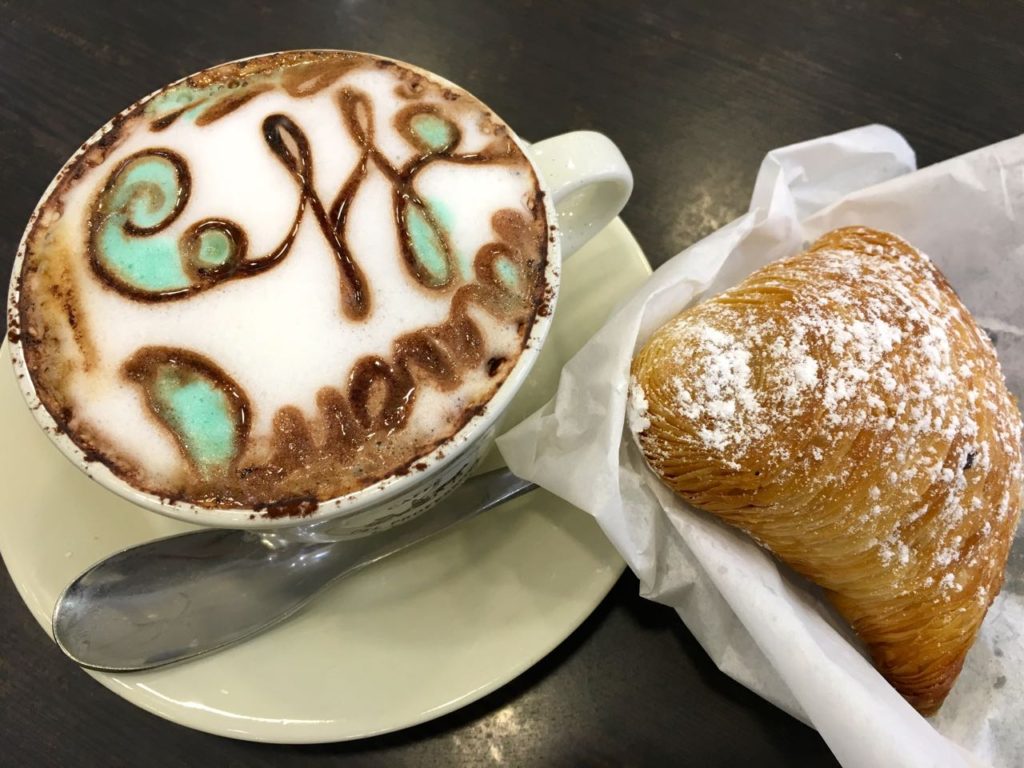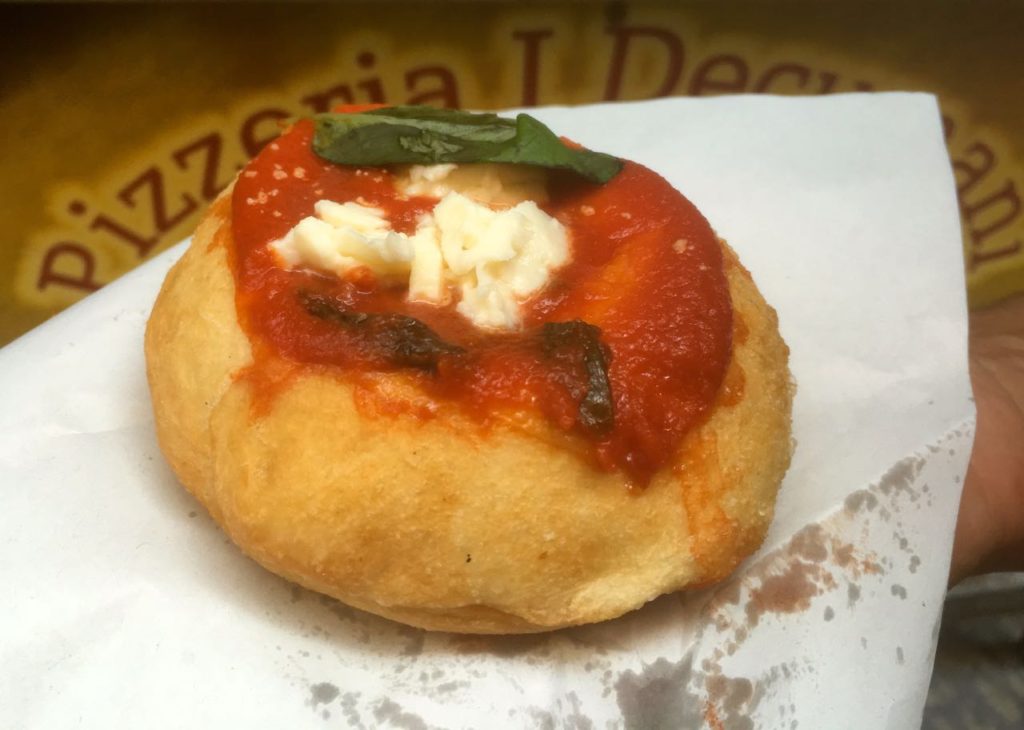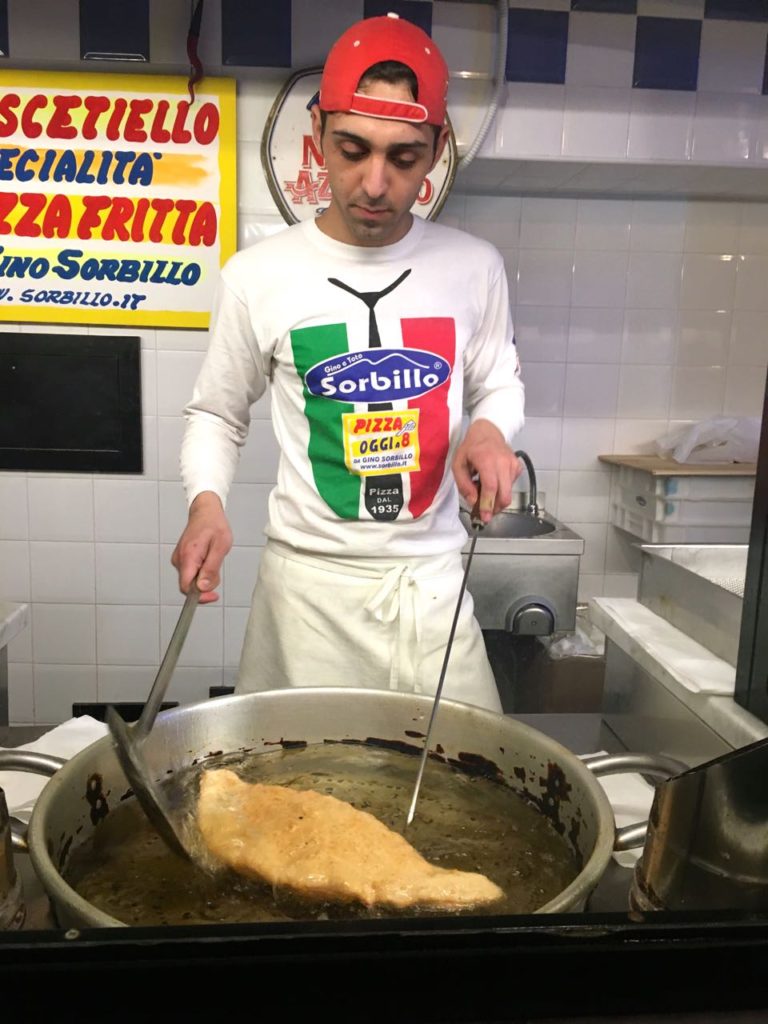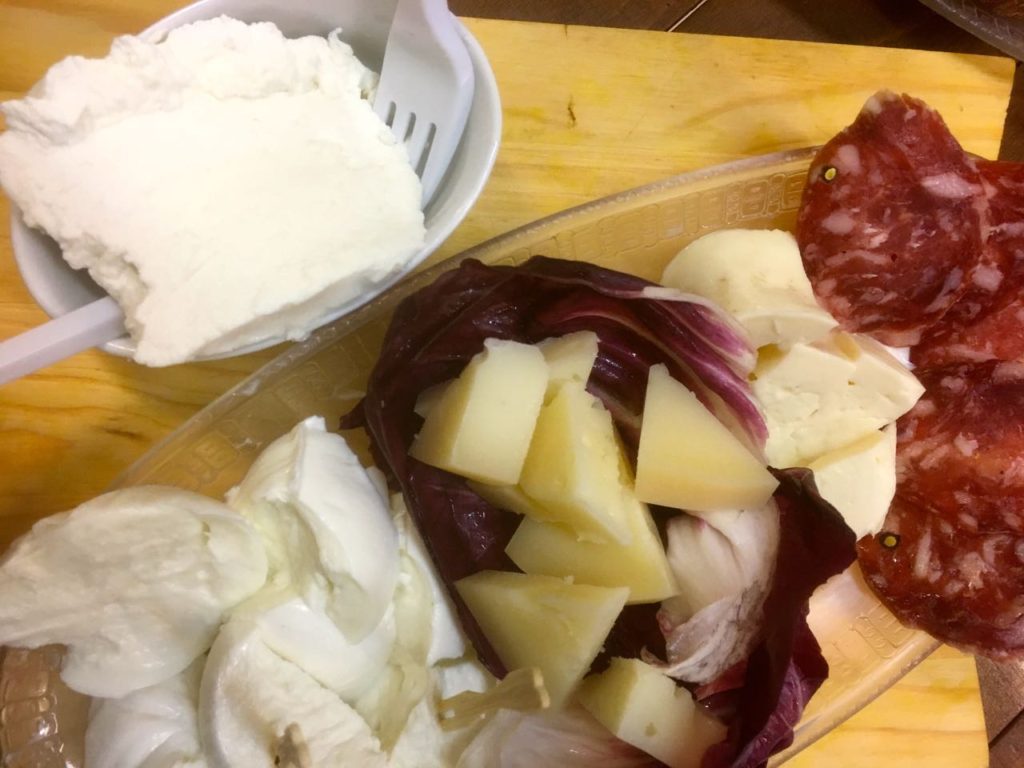In my opinion, there is nothing to do in Naples except eat! Surely, its a historic city with lots of UNESCO world heritage sites and beautiful views, but the sole reason to come here is for the food. Naples is the birthplace of pizza and many other dishes. It is the former capital of Italy and is largely responsible for all things we know of as “Italian cuisine” in most of the world.
On a Tuesday morning, my guide, Alberto from Context Travel and I set out on a food tour of the historic area. We start at Duomo di Napoli (Naples Cathedral) and see the remnants of Saint Januarius inside this spectacular 14th century construction. We walk down the famous Via dei Tribunali, making small detours to see narrow alleys with towering residences on both sides. During the 4-hour long eating spree, we take intermissions between courses to step into a church or a monastery, look at local crafts, and discuss more of – you know what – Italian food!
Here are some highlights of my Food Tour in Naples with Context Travel…
Sfogliatelle is a traditional Neapolitan pastry with thick flaky layers of dough filled with lightly whipped ricotta and a little powdered sugar dusted on top. There is also a brioche version of this. It’s best eaten when warm out of the oven, and locals enjoy it for breakfast or afternoon snack.
 Baba au Rhum is a fluffy sponge cake made with eggs, milk and butter, and soaked in rum. It is recognizable by its shape, a 2-inch cylinder. You can also find cream filled Baba at pastry shops across Naples. It is said that this pastry originated from France, but has Polish roots as well.
Baba au Rhum is a fluffy sponge cake made with eggs, milk and butter, and soaked in rum. It is recognizable by its shape, a 2-inch cylinder. You can also find cream filled Baba at pastry shops across Naples. It is said that this pastry originated from France, but has Polish roots as well.

Italians are passionate about their coffee. When I ordered a cappuccino at 10am, Alberto looked at me in horror. “If you want to drink coffee during the day, it has to be an espresso” he explained. Though coffee is not grown in Italy, they brew it the Italian way, with lots of ground coffee and little water, for a very short time (40 seconds). As a result, the coffee is dense but has less caffeine. You can add sugar, but there’s no room for milk in that tiny Italian espresso cup.

Next we eat the local street food, Pizza Fritta. This light and fluffy deep fried pizza dough almost reminds me of sopapilla from New Mexico. It is topped with tomato sauce, mozzarella and fresh basil. Just the perfect snack before lunch!
There is also a stuffed version of the Pizza Fritta which basically looks like a Calzone. Ricotta cheese, salami and tomato sauce are the only ingredients that are put inside, sealed and deep fried in hot oil. It never got popular outside Naples but out here it is a favorite street snack.
 Arancini are my favorite Italian appetizers. These fried risotto balls are stuffed with ragù (meat and tomato sauce), mozzarella, and peas, though there are other variations with mushrooms, eggplants, or pistachios as well. It can be pretty much made with whatever leftover ingredients you may have. Note ragu with pasta is a special Sunday meal. The ladies of the house will start to cook ragu 24 hours in advance, simmering the tomatoes on very low heat till the sauce is thick and flavorful.
Arancini are my favorite Italian appetizers. These fried risotto balls are stuffed with ragù (meat and tomato sauce), mozzarella, and peas, though there are other variations with mushrooms, eggplants, or pistachios as well. It can be pretty much made with whatever leftover ingredients you may have. Note ragu with pasta is a special Sunday meal. The ladies of the house will start to cook ragu 24 hours in advance, simmering the tomatoes on very low heat till the sauce is thick and flavorful.
Being in southern Italy, cheese, olives, and cured meats are staples. Alberto took me to a speciality grocery store where locals shop for these products. Here I learned that if you can squeeze out milk from Buffalo Mozzarella with the tip of a fork, it means that its fresh. He recommends that Buffalo Mozzarella should be eaten within 24 hours, and should never be used for cooking pizza. We also taste Goat Ricotta, which is used to make pastries, and Smoked and Aged Provolone perfect for snacking with wine.
 Fritto Misto are also popular street foods in Naples. You can often see display windows full of fried snacks including fried zucchini, eggplant, calamari, shrimp, potato croquettes, or whatever is in season. You would order it by Copa (paper cones) and snack on it with a glass of beer or aperitif.
Fritto Misto are also popular street foods in Naples. You can often see display windows full of fried snacks including fried zucchini, eggplant, calamari, shrimp, potato croquettes, or whatever is in season. You would order it by Copa (paper cones) and snack on it with a glass of beer or aperitif.
Next, we head to O Cerriglio – Trattoria Cucina Napoletana to try our hands on making pizza. The chef gives me a brief demo and makes it look so easy, but it isn’t! I have made pizza before, but the extremely thin dough of Neapolitan Pizza Margarita needs some skills to stretch, lift, and twist without burning or forming holes. We stretch the dough with only our fingers (no roller), spread 2 tablespoons of tomato sauce, few slices of fior di latte mozzarella (cow’s milk mozzarella), sprinkle grated parmesan cheese and top with fresh basil leaves. It takes only a minute to make the pizza and another 45 seconds to bake it in this very hot brick oven reaching temperatures of 700-800F. This is why the pizza has a crunchy crust and a soft center.

Alberto was a wonderful guide and showed me a lot of hidden gems in the historic area that I didn’t even knew excited, even though I had been through those streets few times before. He is available for walking food tours in group sizes 1-6 booked through Context Travel.
Read more about the history of pizza.
If you have another Neapolitan speciality dish to share, leave a comment below.